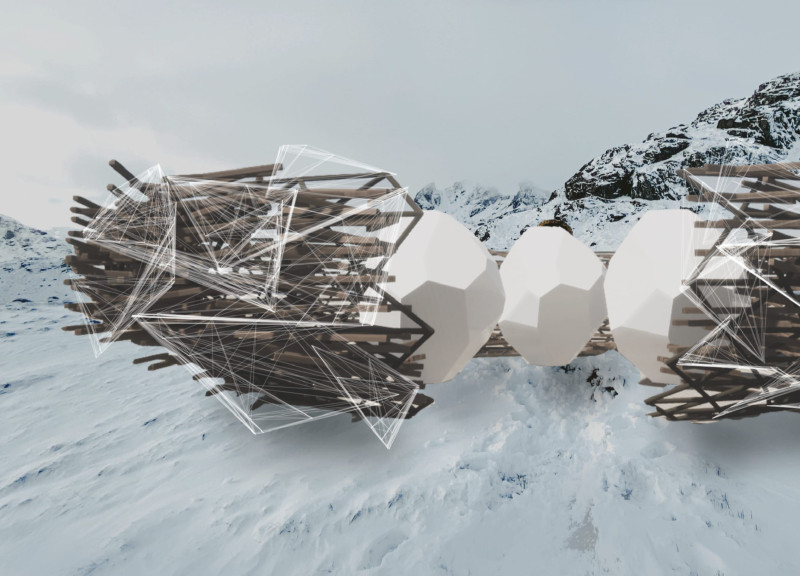5 key facts about this project
The architectural design project "Reincarnation" is conceived as a reflective space set within an alpine landscape. It serves as a multifunctional facility that emphasizes the themes of ecological sensitivity and personal introspection. Designed to facilitate a deeper understanding of human interactions with nature, "Reincarnation" embodies a commitment to sustainable practices while integrating seamlessly into its environment.
The project comprises a series of interconnected, modular structures that represent different phases of the reincarnation process. Each module is designed to foster user engagement, providing spaces that encourage reflection and connection with nature. The architecture melds organic forms with functional spaces, utilizing materials that minimize ecological impact.
Architectural Features and Unique Design Approaches
One of the defining aspects of "Reincarnation" is its modular design approach. The facility is composed of individual units that can adapt to various needs, promoting flexibility in usage. This design not only accommodates personal introspection but also supports communal interaction, inviting users to explore their connections to both themselves and their surroundings.
The integration of organic forms within the architecture is another distinguishing characteristic. The design mimics natural shapes, such as eggs and nests, embodying themes of safety and new beginnings. This aesthetic choice aligns with the project's focus on renewal and transformation, enabling a profound interaction between users and the landscape.
Material choice is critical in reinforcing the project’s ecological principles. "Reincarnation" utilizes sustainably sourced wood from recently fallen trees and eco-friendly panels designed to reduce the overall environmental footprint of construction and operation. These materials not only enhance the aesthetic qualities of the design but also contribute to a higher level of sustainability.
Functional Spaces within the Project
The project is organized into five distinct phases that guide users through their transformative experience. Each space is tailored to engage the user in a different aspect of reflection:
1. The initial phase, "Ready to Rebirth," provides a preparatory space for users to mentally transition into their introspective journey.
2. The "Incubation" area allows for personal contemplation, creating a quiet environment conducive to introspection.
3. The "Break an Egg" phase symbolizes the transition to new awareness, featuring light and warmth that stimulate renewal.
4. The "Rest in the Nest" space serves as a calming retreat, fostering a direct relationship with the surrounding environment.
5. Finally, "Challenge Again" is designed to encourage users to act upon their insights, aiming to integrate newfound understanding into daily life.
The architectural layout promotes movement and flow between spaces, enhancing user experience through deliberate connections to nature and self-reflection.
The "Reincarnation" project exemplifies a thoughtful approach to architectural design that prioritizes ecological responsibility and personal growth. Its unique modularity, organic form, and sustainable material selection distinguish it from typical projects within this domain. For those interested in exploring the project further, details on the architectural plans, sections, designs, and underlying ideas can provide deeper insights into its thoughtful design process.



















































